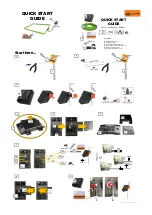
Closed-loop thyristor current control
5-70
System- and communication configuring D7-SYS - SIMADYN D
Edition 06.2002
signal. The absolute value of the line supply voltage can also be read-
in via bus connector -X9 and via -X5 / -X6.
2. Evaluating the absolute value of the line supply voltage via SA60.1
The SA60.1 synchronizing module generates a digital undervoltage
signal (line sensing module SA20.1 X2 pins 9, 10 or 11). This signal
can be connected (using a suitable circuit) in series with the relay
associated with the "Pulse voltage supply" monitoring (e.g.
6QM1038x), and evaluated using a separate digital input of the
SIMADYN D system (SOL.HWH bit4=0 \ SOL.UNM=0).
NOTE
The pulse undervoltage signal should be evaluated according to 1. or
2., because, if the power supply voltage fails, the thyristors could fail
due to a high trigger power loss.
•
External I=0 signal (-X2: b28 and z28)
Standard applications use the internal I=0 signal of the SE20.2. If an
external I=0 signal (digital signal, max. 60V) is to be supplied, e.g.
from a blocking voltage sensing, then the wire jumper IA-IB (at the
bottom lower component side of the SE20.2) should be changed over
to IA-IC (solder connection). In this case, the internal I=0 signal is not
effective. Adaptation to the input signal is realized via the voltage
divider R44, R45 and R46. The internal threshold is 3.6V.
The I=0 signal evaluation is not generally required. In this case, the input
at the change-over logic stage SOL.NZM should be set to 1 so that the
internal zero current signal is used. However, in this case it should be
taken into consideration that the drives lose some of their dynamic
response at torque reversal!
Standard applications with SITOR cabinets provide a special type of field
supply. In this case, the "Field current setpoint output" block FB FCS
should not be configured, and the fault evaluation associated with the
field current monitoring at input SOL.HM1 \ bit 14 should be set to 0.
The monitoring signals are, with the exception of the field current
monitoring, defined so that a logical "1" signal represents a fault-free
status.
A logical "0" signal or an open-circuit input i.e. wire breakage, results in a
fault detection (masking of the switch-over logic stage at inputs
SOL.HWM/HM1/HM2).
Many signals are output via relays in the SITOR cabinet. If possible, the
wiring should be realized as follows to provide the most flexible
evaluation possible, regarding other evaluation units:
2P24
Fault/error-free status
Monitoring signal to the transfer module
Field supply
Connecting-up the
monitoring signals
















































